
Key Points
- New Lows on the NYSE Continue Higher
- NYSE New Highs Stall
- S&P 500 Metrics Are Flat on the Week
- Small Cap Breadth Is Mixed
- NASDAQ 100 Data Weakness Stands Out
NYSE Breadth
The NYSE Advance/Decline line is holding below the 50-day moving average after failing to confirm the interim March peak for the S&P 500. The index continues to do battle with its 50-day moving average as the indicator provides very early hints of a base-building process. However, more time is needed for the A/D Line to improve and give equity bulls a positive data point.
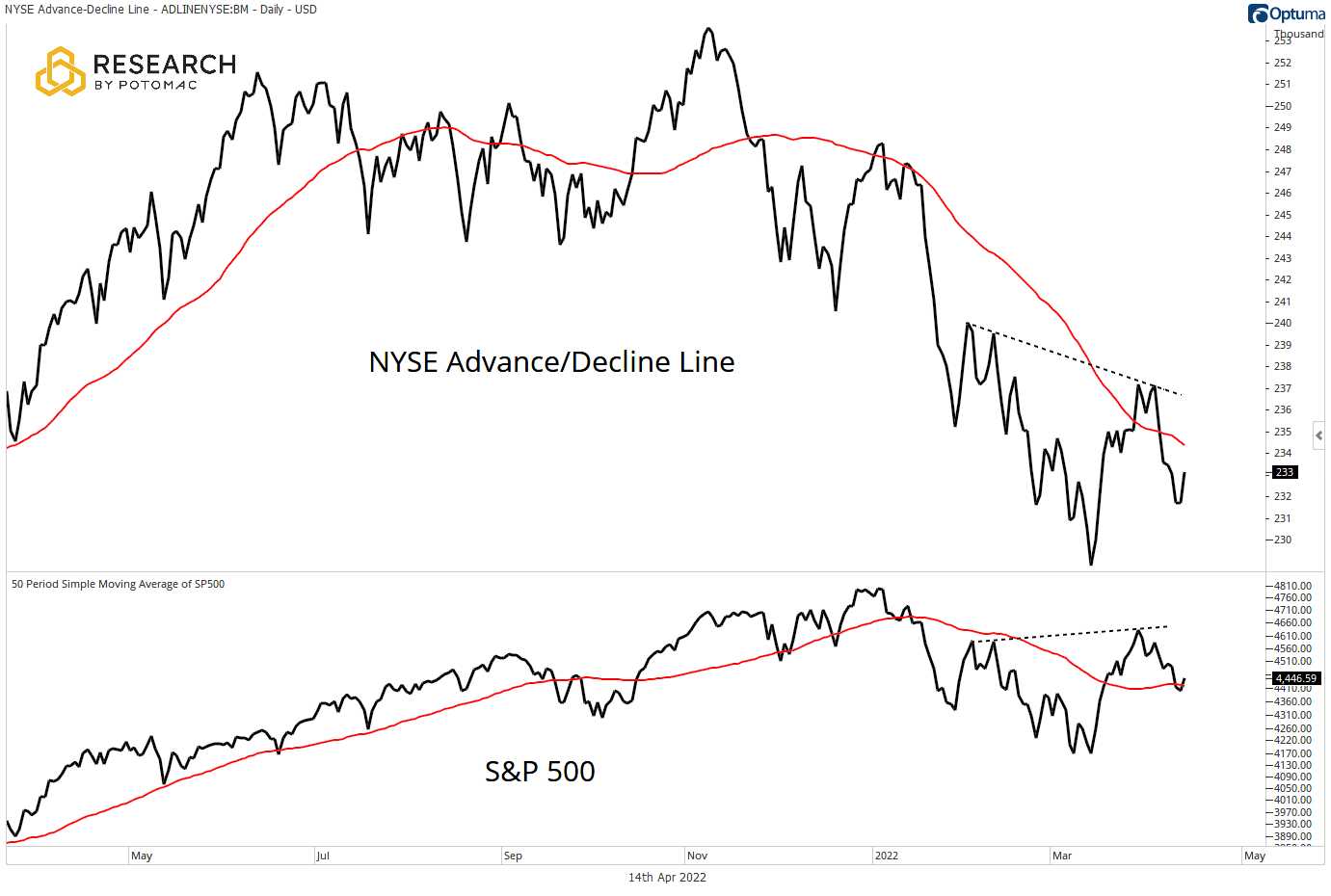
The five-day moving averages of issues on the NYSE making new 52-week and six-month lows continue to trend higher this week. Bulls will point out that the moving averages remain in downtrends since peaking in early 2022 but reading consistently below the 5% level would be more encouraging.
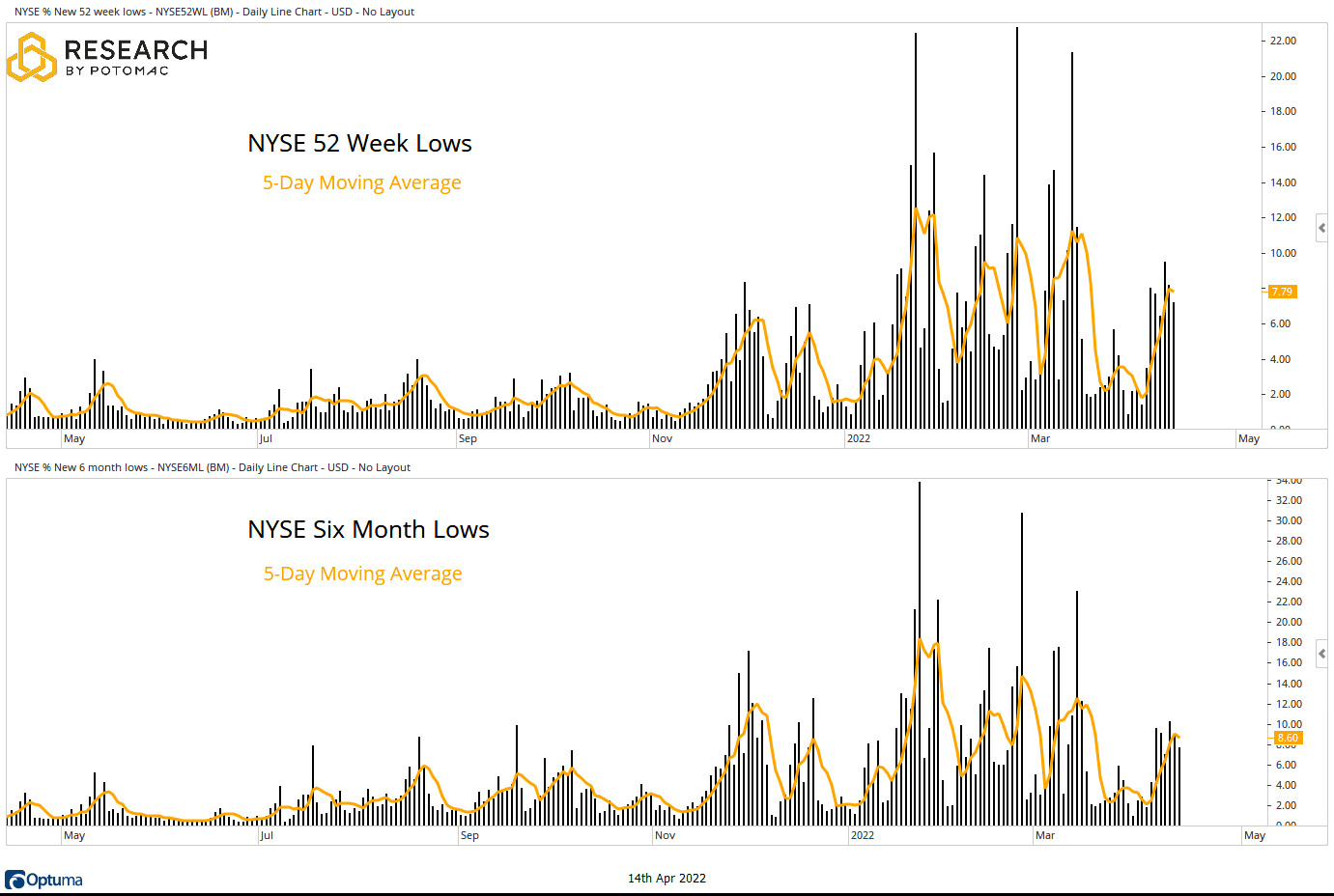
The five-day moving averages of stocks on the NYSE making new six-month and 52-week highs continue to meander, unable to gain much traction on rally attempts. Equity bulls want to see peaks in 2022 broken to the upside to gain more confidence that rallies will be sustainable.
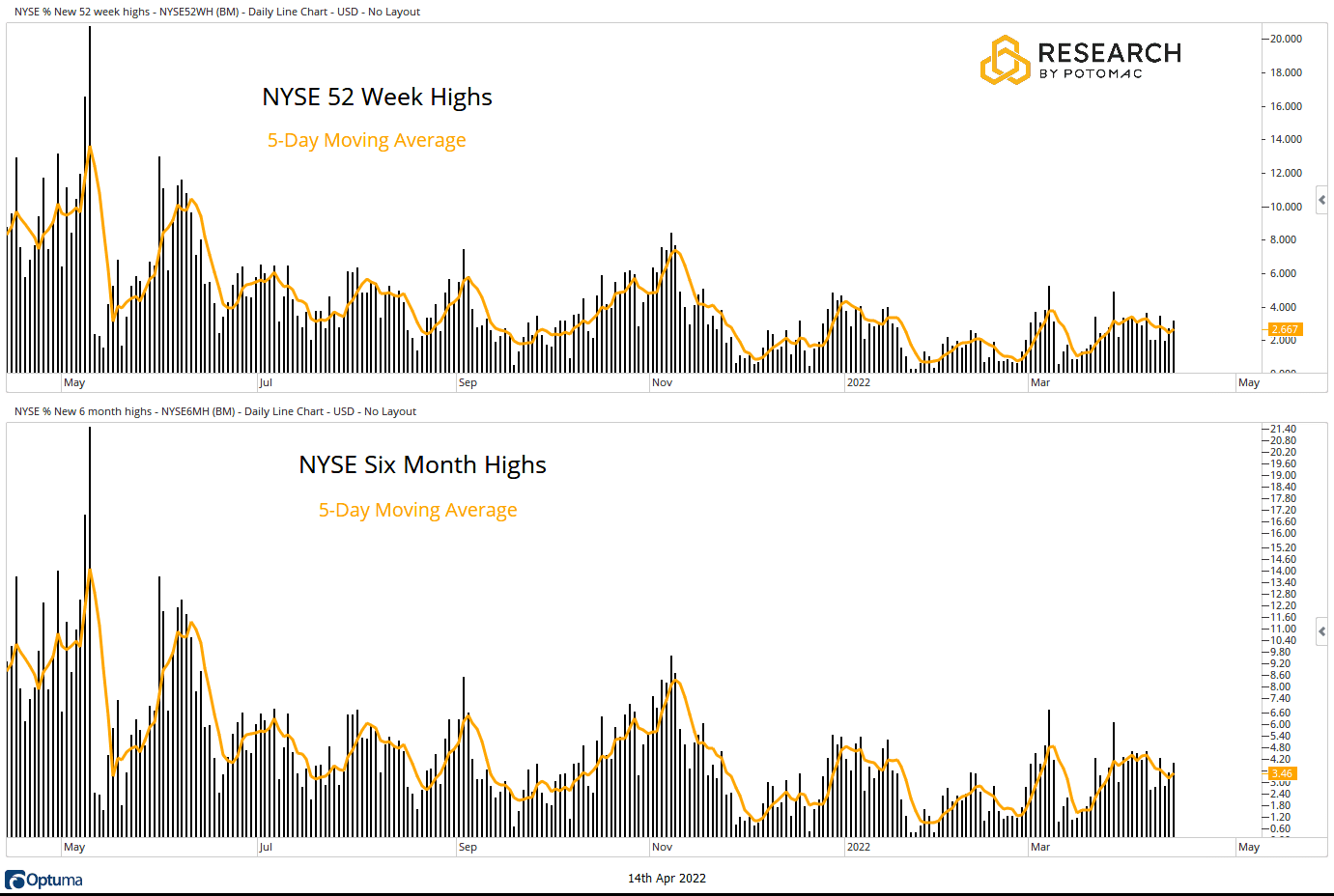
The percentage of NYSE issues trading above their respective 200-day moving averages clocks in at 29% this week vs. 28% last week. The small increase has done nothing to change the bearish trend that gripped this indicator since early 2021. At the same time, the S&P 500 has been oscillating around a flat 200-day moving average, which speaks to the choppy trend in the index this year.
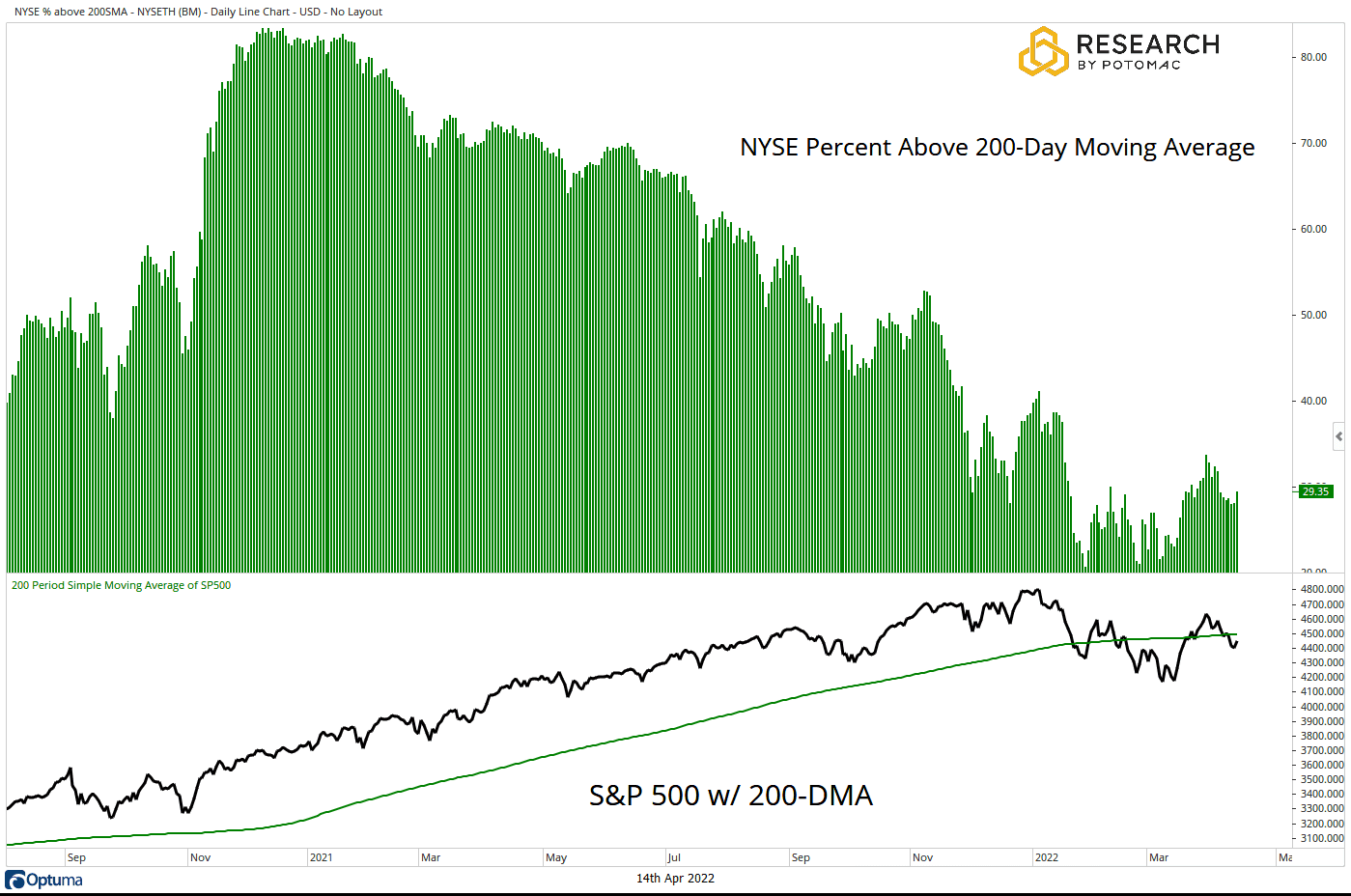
The percentage of NYSE issues trading above their respective 50-day moving averages is flat this week, registering another reading at the 41% level. While this indicator has been improving over the course of the year, the larger bearish trend that began in 2021 remains in place. The S&P 500 is trying to hold its ground above a flat 50-day moving average.
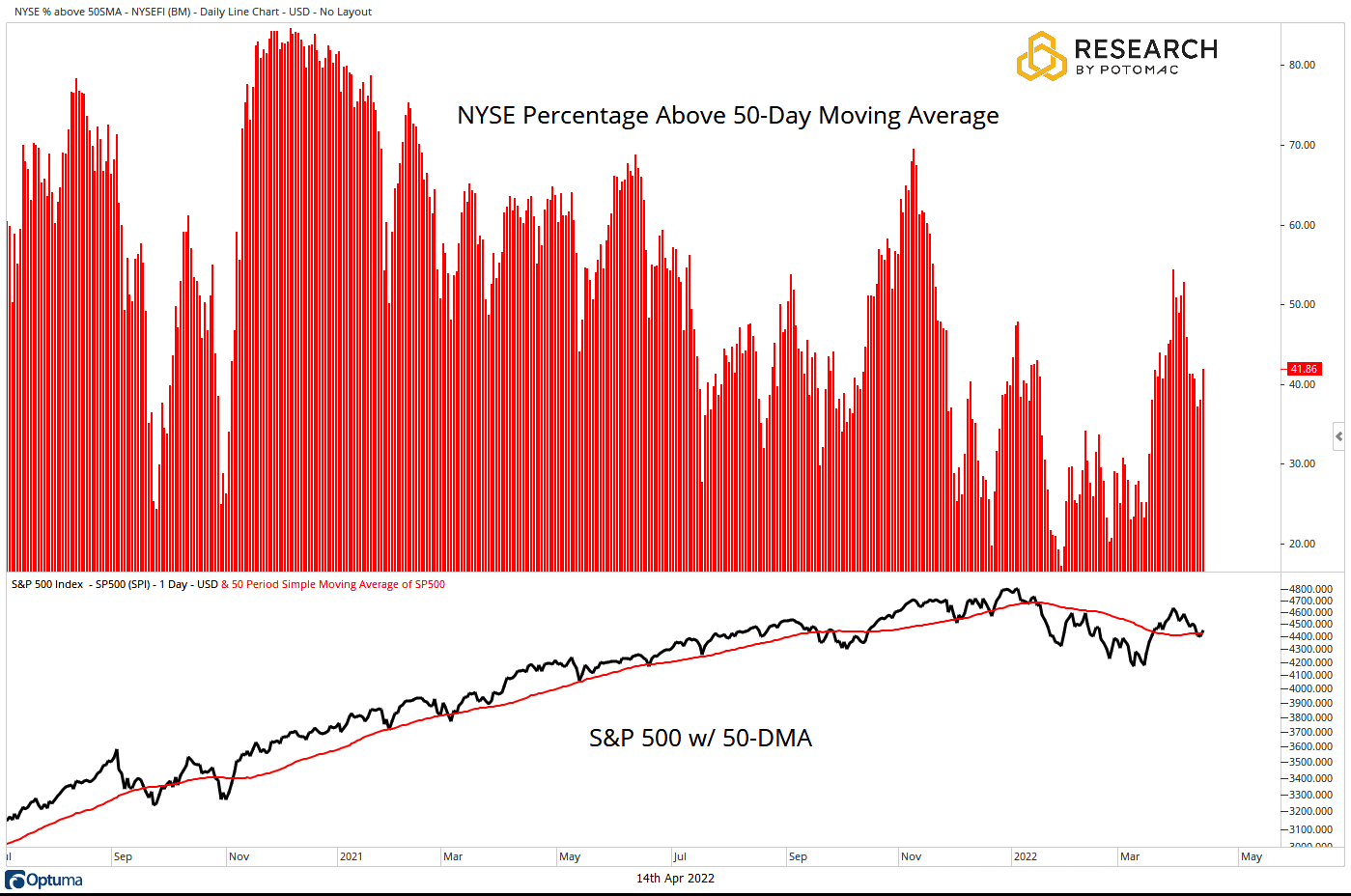
After spiking to 71% last week, the percentage of issues on the NYSE trading above their respective 20-day moving averages has moved down to 40% this week. This indicator tends to act more like an oscillator, signaling overbought and oversold conditions. At current levels, there is not a clear message. The S&P 500 has moved back below its 20-day moving average.
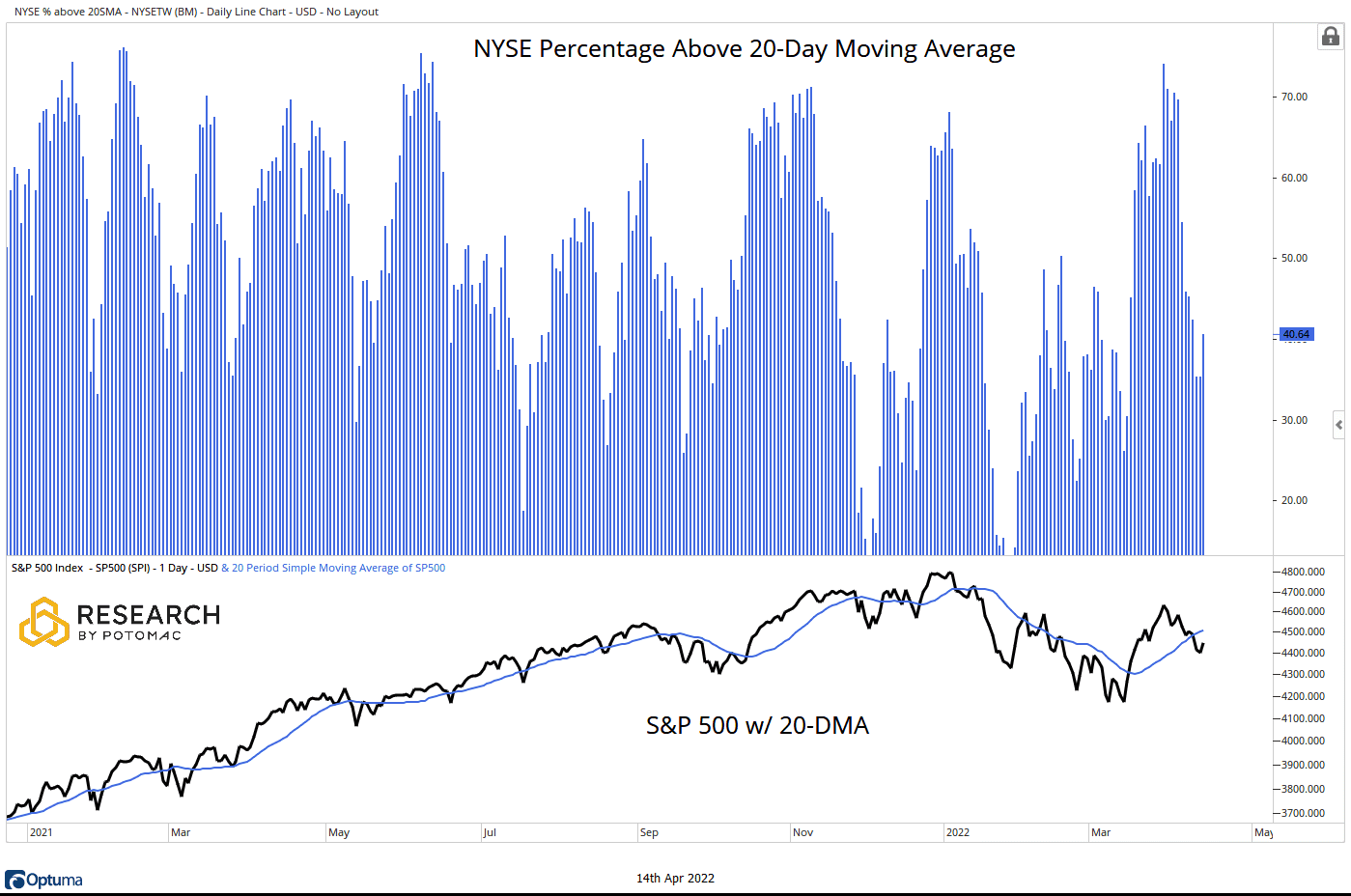
S&P 500 Breadth
Breadth metrics for the S&P 500 were mostly unchanged over the past week.
- Advance/Decline Line: Holding above the 50-day moving average.
- Percent Above Their 200-Day Moving Average: 47%, flat on the week.
- Percent Above Their 50-Day Moving Average: 54% flat on the week.
- Percent Above Their 20-Day Moving Average: 48% from 53% last week.
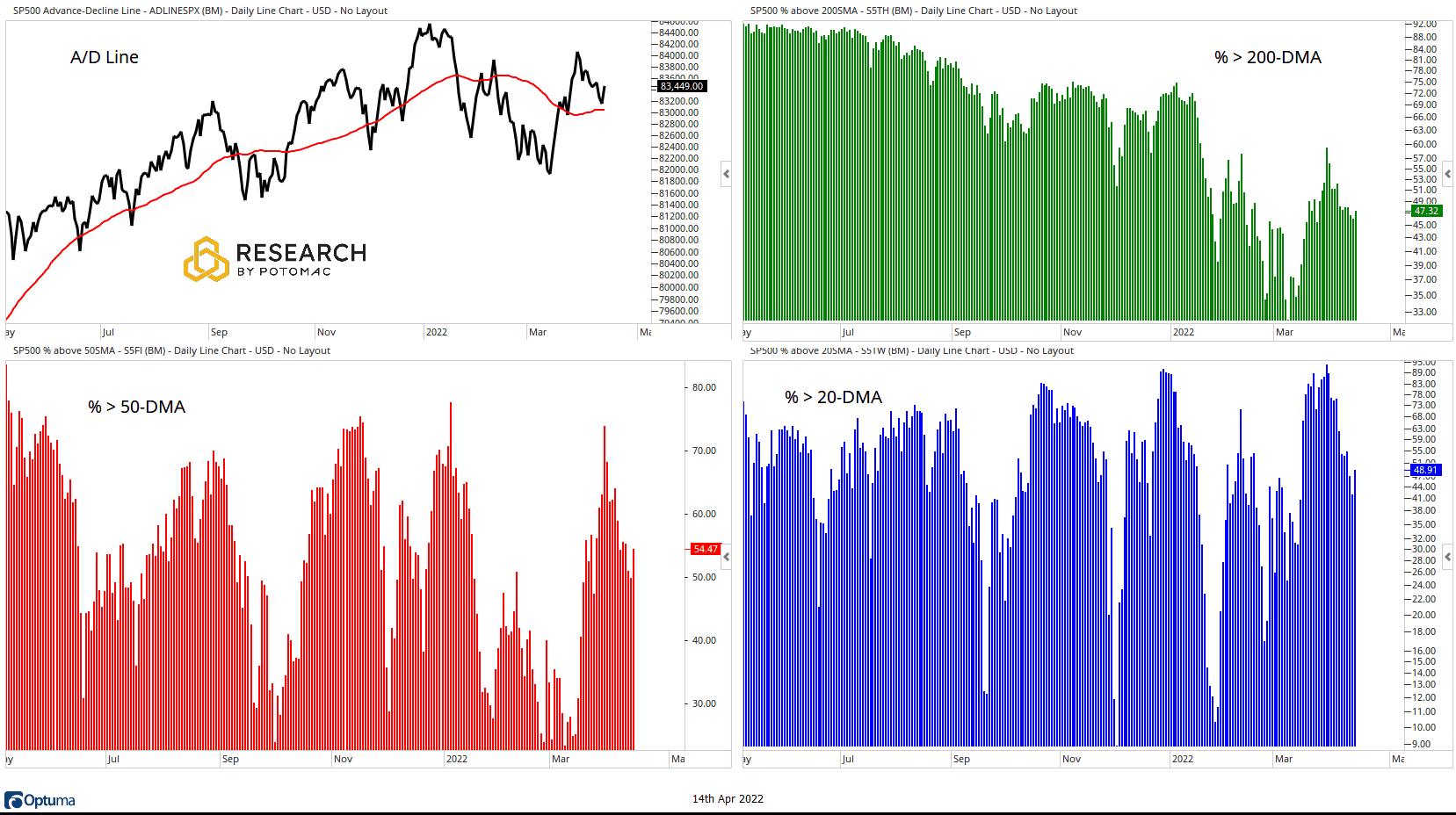
Small Cap Breadth
Breadth metrics for the S&P 600 Small Cap Index were mixed on the week. Trend metrics improved slightly but the A/D Line made another lower low.
- Advance/Decline Line: Below the 50-day moving average, made a lower low this week.
- Percent Above Their 200-Day Moving Average: 35% from 33% last week.
- Percent Above Their 50-Day Moving Average: 39% from 35% last week.
- Percent Above Their 20-Day Moving Average: 36% from 30% last week.
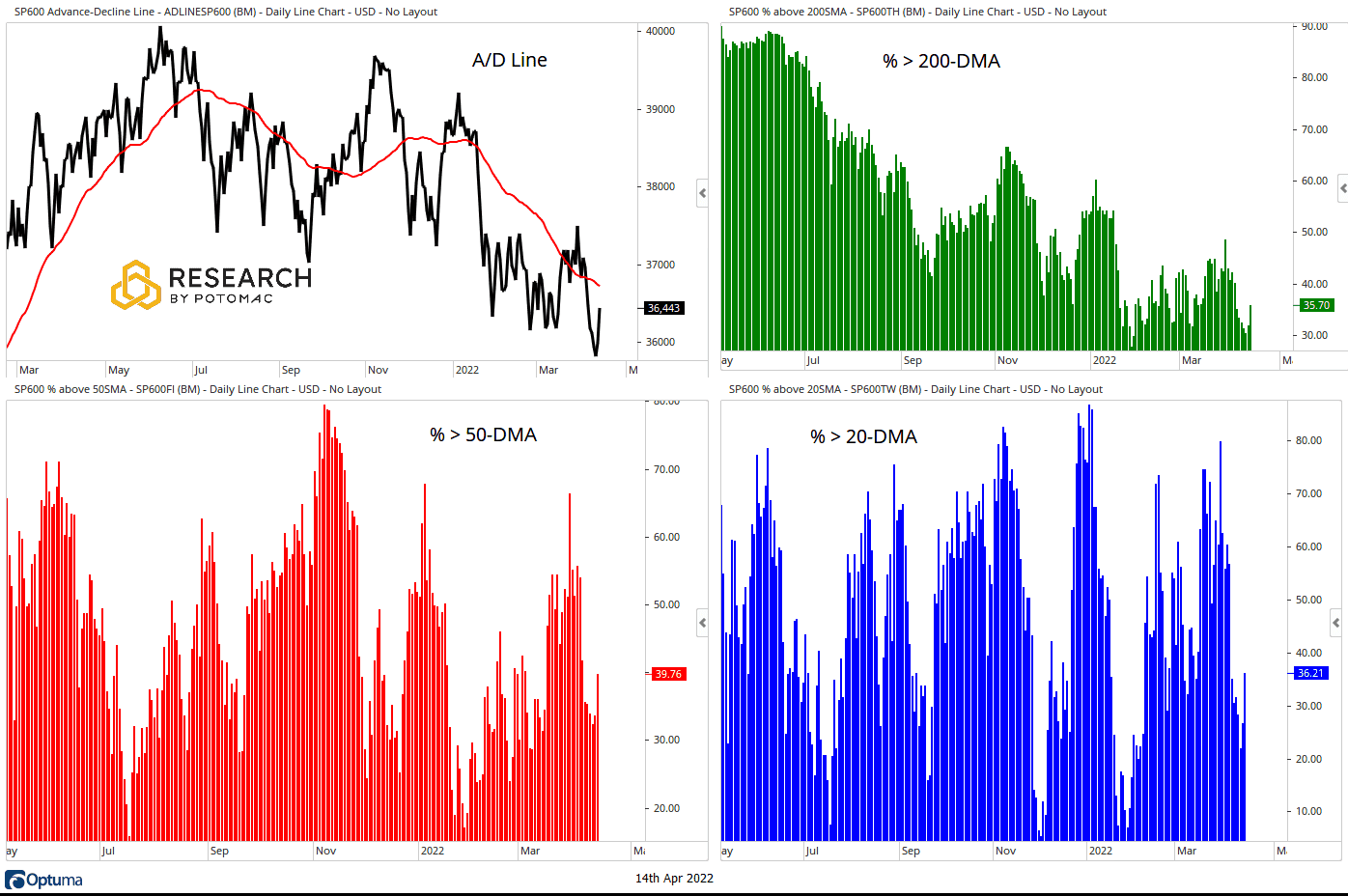
NASDAQ 100 Breadth
Breadth metrics for the NASDAQ 100 were weaker again this week.
- Advance/Decline Line: Doing battle with the 50-day moving average.
- Percent Above Their 200-Day Moving Average: 33% from 35% last week.
- Percent Above Their 50-Day Moving Average: 46% from 49% last week.
- Percent Above Their 20-Day Moving Average: 40% from 56% last week.
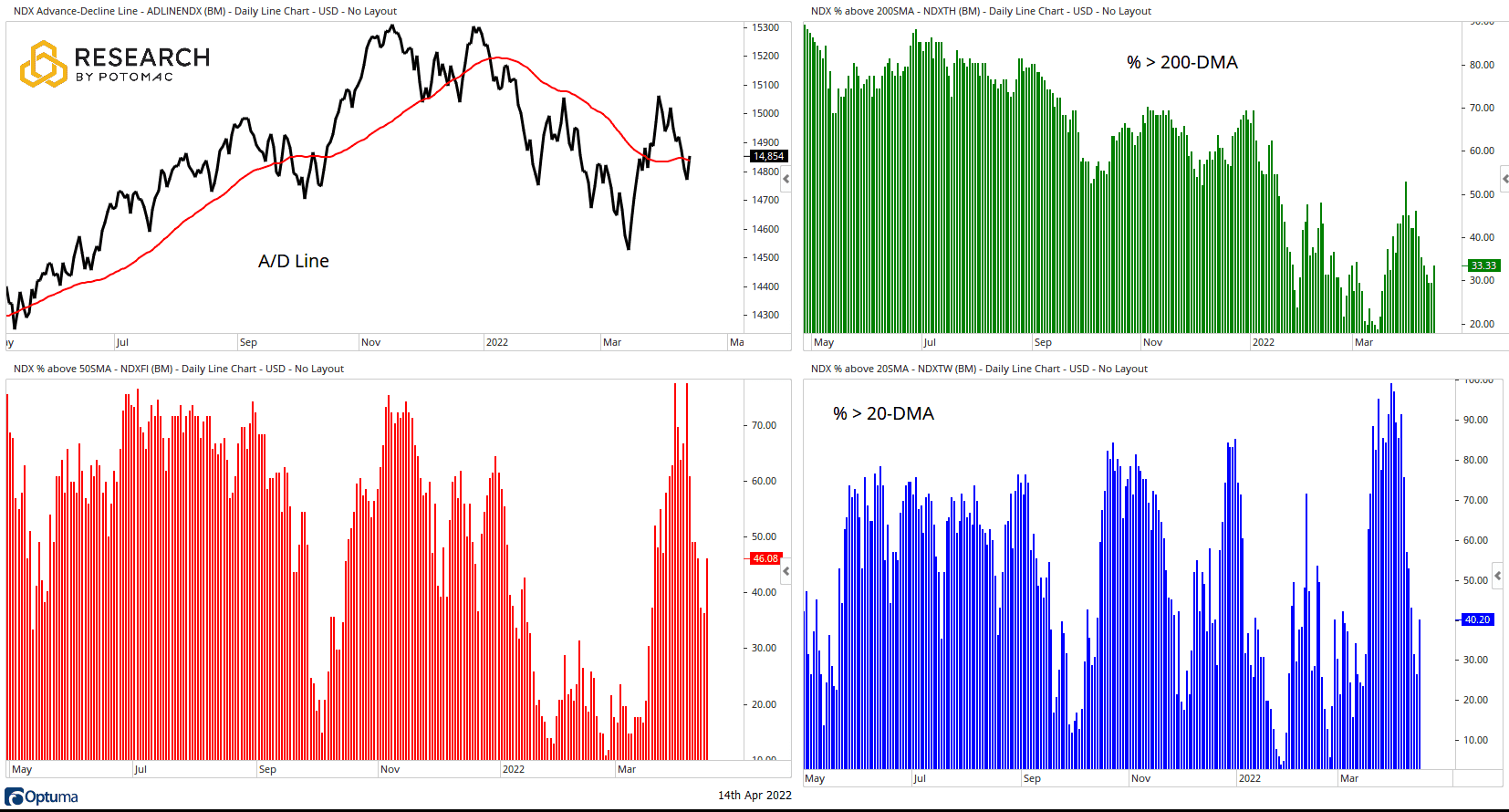
Take-Aways:
After snapping a three-week streak of improvements last week, the most recent breadth data is mixed to slightly lower. New lows on the NYSE have trended higher as new highs have stagnated. NASDAQ 100 breadth was notably weaker while trend metrics improved for Small Caps. Generally, more work needs to be done for bulls to have confidence in a sustainable rally.
Disclosure: This information is prepared for general information only and should not be considered as individual investment advice nor as a solicitation to buy or offer to sell any securities. This material does not constitute any representation as to the suitability or appropriateness of any investment advisory program or security. Please visit our FULL DISCLOSURE page.
